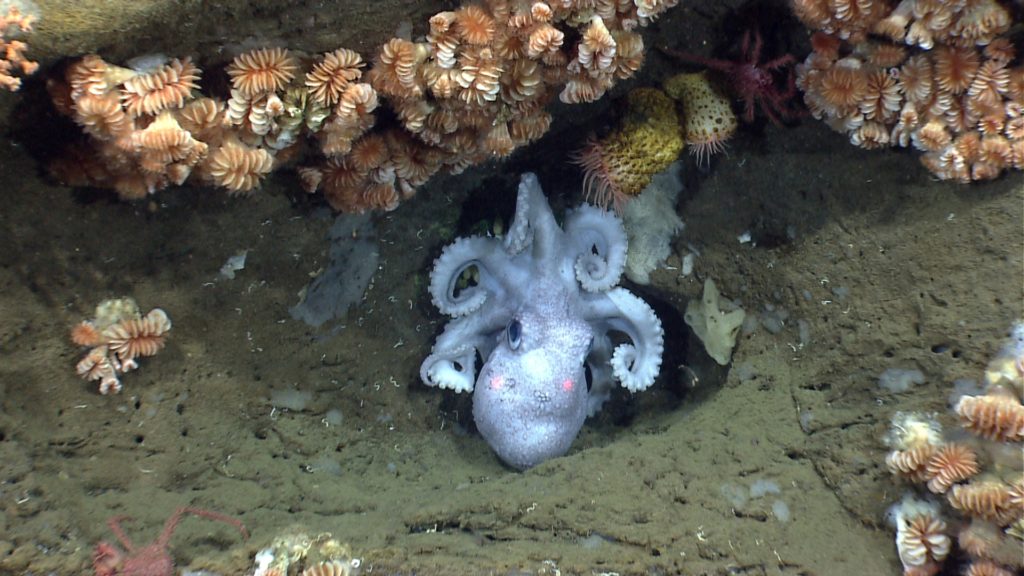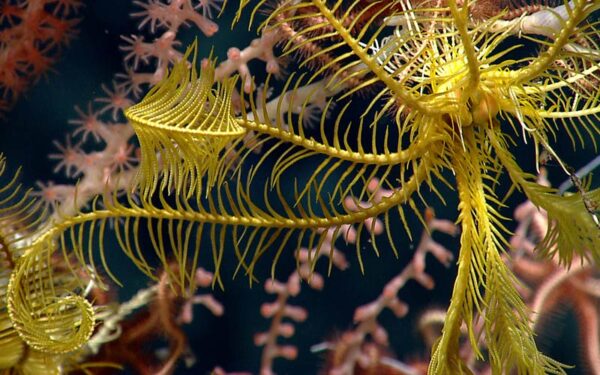
A recent ruling affirmed the Northeast Canyons and Seamounts national monument status. The monument is home to an extraordinary diversity of marine wildlife. Photo: NOAA
President Teddy Roosevelt memorably observed that “there can be nothing in the world more beautiful” than the natural wonders of the United States. Roosevelt may have been talking about what would become iconic national parks like Yosemite and the Grand Canyon, but a recent federal court ruling recognized that New England’s underwater monument is fully on par with these other national treasures.
On Friday, the U.S. District Court for the District of Columbia threw out a lawsuit by the fishing industry that sought to revoke the Northeast Canyons and Seamounts national monument status. The judge in the case ruled that the monument was created legally – a clear victory for the ocean and for the only marine national monument in the Atlantic. The ruling confirms that the Antiquities Act can be used to protect the ocean, keeping these underwater spaces safe from oil drilling and commercial fishing.
Antiquities Act Affirmed as Tool for Ocean Monument Creation
The Northeast Canyons and Seamounts lie just 150 miles off the shores of Cape Cod. The monument’s three canyons are deeper than the Grand Canyon, and its four ancient massive underwater volcanoes are the only seamounts in the U.S. Atlantic. They are ecological gems, the home of endangered marine mammals, exotic deep-sea coral reefs, and other unique marine life that scientists are just beginning to explore.
Recognizing their significance, President Obama designated the Canyons and Seamounts a marine national monument in 2016. He created the monument using the Antiquities Act, a law established by Teddy Roosevelt in 1906. The Act has since been used by presidents of both parties to create more than 150 monuments on the land and in the ocean. It is the only law focused on protecting areas of scientific interest in the ocean.
Soon after the designation of the Northeast Canyons and Seamounts, the Massachusetts Lobstermen’s Association and other industry groups claimed the Antiquities Act didn’t give President Obama the power to create a monument in the ocean. They sued the federal government, hoping to overturn the long-term conservation goals of the monument so they could continue exploiting it for short-term economic gain. Having supported the monument designation from the beginning, CLF and our partners at NRDC and Earthjustice intervened in the case.
The court soundly rejected the commercial fishing groups’ arguments, affirming that the Antiquities Act can protect ocean areas and important marine resources. The decision confirms a president’s ability to protect the most fragile and scientifically important areas in American waters from destructive activities like oil drilling and commercial fishing.
And there is so much to protect in the Canyons and Seamounts: the monument is home to a rich diversity of ocean wildlife – from vibrant deep-sea coral to dense schools of fish to pods of dolphins. This remarkable ecosystem is the only place in the U.S. Atlantic where endangered species like the Atlantic puffin and the sperm whale can thrive without the threat of industrial activity. It is only one percent of the U.S. Atlantic, but it captures an extraordinary diversity of wildlife and underwater formations.
Protections for Generations to Come
In his decision, the judge wrote that “our people should see to it that [the Canyons and Seamounts] are preserved for their children and their children’s children forever.” We couldn’t agree more. With threats to our ocean lurking in the White House and in Congress, it’s crucial that the monument remains protected. Keeping the Northeast Canyons and Seamounts safe ensures that we are leaving a proud legacy for the people of New England, just as our predecessors left us the Grand Canyon and Yellowstone in their natural glory.
The conservation and protection of natural resources is part of a strong, bipartisan tradition that dates back more than 100 years. CLF is proud to help carry that tradition forward and will continue to defend our marine monument – and all national monuments.



